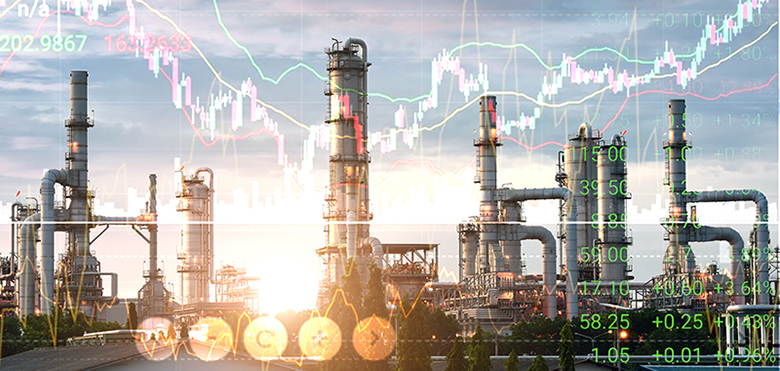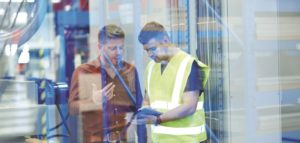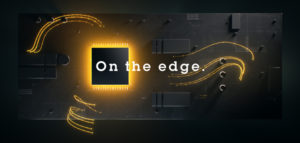How can augmented reality and video surveillance work together?
What began with daydreaming, quickly progressed to innovation, and has now reached the point of bringing certain – “what if?” scenarios to life. We are starting to see industries experience the benefits of integrating augmented reality (AR) with their video surveillance.
With more use cases opening up as further AR applications come to market, now is a great time to look at the progress made so far, as well as the future potential as we move closer to our vision of creating “a smarter, safer world”.
A brief background on augmented reality
Before we dive in, it’s worth clarifying what we’re referring to when discussing AR technology. In broad terms AR can be defined as the ability to overlay text, images, and other information onto a live scene or video to provide additional insight to the user. This information can be displayed on whatever device is used to view the live scene, such as monitors and mobile devices, and in some applications through smart glasses and headsets.
It’s worth contrasting this with virtual reality (VR) as they can sometimes be confused. VR – most commonly through a headset – provides a first-person perspective of being in an environment or situation the wearer is not actually physically in.
VR is the illusion of being in a particular environment; AR is actually being somewhere or viewing an actual scene, with additional information overlaid.
A simple example of AR in the consumer environment would be an individual walking down a street in an unfamiliar town, seeing the environment live, but with useful information overlaid on what they’re seeing through AR-enabled glasses or on a mobile device. This information might be directions to a meeting location, or local places of interest. The individual might issue a voice command, “show me the top-rated restaurants on this street” with the AR immediately altering the overlaid information in response.
Some Axis partners are already delivering apps that allow for information to be overlaid on live video. CamStreamer develops apps that allow for live streaming of video from Axis cameras to popular video sites. Its CamOverlay app enables customers to add graphics and information to live video. This example from Prague shows a live camera pivoting to different views of the city, with the overlaid information changing to suit.
AR can effectively be an “insight superpower”, adding valuable information to what someone’s actually seeing, hearing, touching…even smelling and tasting, without having to use their hands to access it.
When thought about in this way, our imaginations can run wild.
AR in video surveillance today
Modern network video surveillance cameras provide extremely high-quality images to operators which in themselves deliver significant value. Live views of a scene in forensic levels of detail allow operators to monitor and assess situations, and respond in real-time to incidents and activity, alerting first responders when relevant.
In situations when operators are then directing first responders on the ground, there are clear benefits to having additional information overlaid on the scene. Some Axis cameras include an orientation aid, which can overlay street names and compass points to live video footage to assist in providing accurate directions.
But when seconds can make a real difference, many other useful pieces of information can be delivered through AR overlay. Understanding the location of the closest defibrillator, for instance, and being able to direct people at the scene via live audio could be a life-saving enhancement.
Helping first responders with the layouts of building, entrances and emergency exits, whether remotely from the operations room or locally via mobile devices, can hasten building evacuation or finding people trapped inside. Safely dispersing crowds from areas through the most effective routes can reduce the risk of incident escalation – again, this can be managed remotely from the control room with information overlaid on live video monitors, or locally when delivered on mobile devices.
Opening up new use cases
When it comes to integrating AR alongside video surveillance, the leaps and bounds of progress to-date have enabled brand new use cases.
For instance, live footage is already bringing vital insights to emergency services, such as firefighters, in some regions. While on route to a fire, PTZ video surveillance on board the fire truck can be constantly pointed towards the fire, streaming live footage to the firefighters as they prepare. By enriching this people are thought to be in the building and where they may be.
Looking ahead, there is the potential for a police officer to view video with information overlaid using data aggregated from sensors such as installed surveillance cameras, body worn cameras, and even cell phone location data. Text could be overlaid on the video to direct the officer to the location of a cell phone that was used to initiate a call to emergency services requesting assistance, speeding up a search for someone in distress. It is also not beyond the realms of imagination to think that medical staff and paramedics could use AR to help provide assistance and support to people at the scene of an accident, or that live feed of surveillance from the scene would assist them with relevant preparations while on route.
Beyond emergency services
The use cases above provide some of the most compelling scenarios in which AR could have a significant positive impact on public safety, but examples in other sectors are also coming to light.
For example, personnel in an industrial plant can receive data from connected sensors throughout the site – video surveillance, but also temperature, air quality sensors and smoke detectors as examples – which can allow them to react to issues more rapidly, while also having a clear and live view of the scene.
Going beyond this, alerts related to sudden increases in temperature, breaches of perimeters, specific noises (such as raised voices) could bring live images to video monitors, while mapping directions of the fastest route to the scene, or to locations of fire extinguishers and alarms. In the case of a break-in, video surveillance cameras tracking the intruder might even leave a trail of ‘breadcrumbs’ overlaid on video surveillance for security officers to follow.
The potential applications are endless.
AR and video surveillance – sooner rather than later?
Many companies are already tapping into the benefits of Ar in their surveillance systems. From manufacturing to retail to city-wide surveillance, AR technology is enriching existing video streams in a variety of ways – with more use cases constantly opening up.
Technologically, there’s very little – if anything – to stop the continued development of solutions such as those detailed above. Only our imagination can limit the potential of this technology to create a smarter, safer world.
Find out more about how Axis is delivering AR to enhance video surveillance



